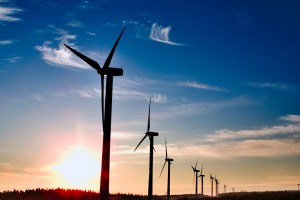32,000 new turbines are planned, but how many understand the major flaw with the UK’s most popular renewable energy source?

It seems at first glance to be the perfect solution to an ever-growing problem. Like the sun, the wind never ‘runs out’, and each turbine we build in the UK provides a little bit more energy to meet our needs.
Unfortunately, the situation is a little more complex than that.
In the UK, we already have about 3,500 wind turbines that generate 1-2% of our electricity. Energy & Climate Change Secretary Chris Huhne recently announced plans for the future of Britain’s energy security. To the dismay of many they didn’t include shale gas, but instead he favours a mixture of nuclear and wind turbines – 32,000 of them to be precise.
Now, there are too many arguments for and against wind power to list here, but there is one overriding one that nobody can ignore: You can not control the weather, and you can not store electricity in large amounts.
In Germany (where they are phasing out nuclear power by 2022), they already have 22,000 wind turbines, but they only generate 6% of the country’s energy.
So what’s the problem?
As this page on wind turbines explains very well, the fact is that no wind turbine will ever have a consistent output, due to variations in wind speed and direction, so all the energy generated by wind turbines must go directly into the grid and be used at the time it is generated – this is how electricity transmission works.
You can’t store it up when the wind is blowing strongly and then use it when the wind has died down. The strongest winds also tend to coincide with the lowest demand, meaning that we need them the most when they are at their least useful.
What this essentially means is that no matter how many turbines we build, we will always need a backup power source for when the wind stops.
This means gas or coal-fired power stations, because they can be switched on quickly to balance the load on the grid, making sure there are no power cuts. Nuclear power can’t be turned on this fast, so cannot be considered backup for renewables. Not at the moment anyway.
As business owners we all know that the threat of power cuts could be devastating to production and can mean the difference between hitting a deadline or not, keeping a client or losing one.
Bizarrely enough, it seems the Duke of Edinburgh may be right on this one.
